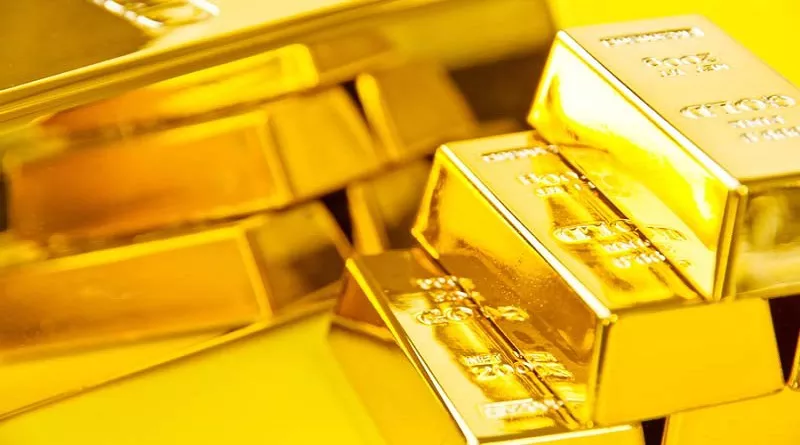Gold has long been revered as a store of value and a hedge against economic uncertainty. Among its various denominations, the quarter ounce of gold holds a unique position, offering investors a balance between affordability and tangible asset ownership. In this article, we delve into the intricacies of the quarter ounce of gold, exploring its worth, historical significance, market dynamics, and factors influencing its price.
Understanding the Quarter Ounce of Gold
What is a Quarter Ounce of Gold?
A quarter ounce of gold, as the name suggests, refers to a specific weight measurement of gold, equivalent to 7.087 grams. It is one of the fractional sizes in which gold is traded, alongside other popular denominations such as the one-tenth ounce and half ounce. Fractional sizes allow for more accessible entry into the gold market, catering to a broader range of investors with varying budgetary constraints.
Historical Context
Throughout history, gold has been prized for its rarity, durability, and intrinsic value. Civilizations have minted coins, crafted jewelry, and used gold as a medium of exchange, solidifying its status as a symbol of wealth and prestige. The quarter ounce of gold, although not as commonly discussed as larger denominations, has played a significant role in trade and commerce, particularly in periods of economic upheaval or currency devaluation.
Determining the Worth of a Quarter Ounce of Gold
Market Price
The value of a quarter ounce of gold is primarily determined by its market price, which fluctuates based on supply and demand dynamics, geopolitical factors, economic indicators, and investor sentiment. Gold is traded on various exchanges worldwide, with prices quoted in major currencies such as the US dollar, euro, and yen. Investors can track the market price of gold in real-time through financial news outlets, online platforms, and specialized bullion dealers.
Calculating the Monetary Value
To calculate the monetary value of a quarter ounce of gold, one simply multiplies the weight of gold (in ounces) by the current market price per ounce. For example, if the market price of gold is $1,800 per ounce, the value of a quarter ounce would be $450 ($1,800/4). It’s important to note that additional costs, such as premiums charged by dealers, shipping fees, and taxes, may affect the final purchase price.
Factors Influencing the Price of Gold
Supply and Demand
Like any commodity, the price of gold is influenced by the fundamental forces of supply and demand. Gold production is limited, with new supply primarily sourced from mining operations and recycling of existing gold stocks. On the demand side, gold is sought after for various purposes, including investment, jewelry fabrication, and industrial applications. Fluctuations in either supply or demand can impact the price of gold, with shifts in investor sentiment often driving short-term price movements.
Inflation and Currency Devaluation
Gold is often viewed as a hedge against inflation and currency devaluation since it maintains its purchasing power over time. When fiat currencies lose value due to inflationary pressures or monetary policy interventions, investors may flock to gold as a safe haven asset. As a result, gold prices tend to rise during periods of economic uncertainty or when confidence in government-issued currencies wanes.
Geopolitical Tensions
Geopolitical tensions, such as conflicts, trade disputes, and geopolitical instability, can also influence the price of gold. Investors perceive gold as a “crisis commodity” that retains its value in times of geopolitical turmoil or systemic risk. News of geopolitical events or developments often triggers volatility in the gold market, as investors adjust their portfolios to mitigate risk exposure.
Interest Rates and Monetary Policy
The relationship between gold prices and interest rates is complex but generally inverse. Gold, which yields no interest or dividends, becomes more attractive relative to interest-bearing assets when interest rates are low or when central banks engage in expansionary monetary policies. Conversely, rising interest rates or tightening monetary policy can dampen gold demand, as investors may favor higher-yielding investments.
Investing in Quarter Ounce Gold
Diversification
Including quarter ounce gold coins or bars in an investment portfolio can enhance diversification and reduce overall risk exposure. Gold exhibits low correlation with other asset classes such as stocks and bonds, making it an effective portfolio diversifier. During periods of market volatility or economic downturns, gold often acts as a stabilizing force, helping to preserve capital and mitigate losses.
Liquidity
Quarter ounce gold coins, such as the American Gold Eagle or the Canadian Maple Leaf, are recognized worldwide and easily tradable in the secondary market. This liquidity feature provides investors with flexibility, allowing them to buy, sell, or exchange gold holdings with relative ease. Moreover, quarter ounce coins are divisible, enabling investors to liquidate a portion of their gold holdings without needing to sell the entire coin.
Storage and Security
When investing in physical gold, considerations regarding storage and security are paramount. Investors have the option of storing gold at home, in a bank safe deposit box, or through third-party storage facilities. Each storage method has its pros and cons, with factors such as accessibility, insurance coverage, and cost influencing the decision-making process. Additionally, reputable dealers and storage providers adhere to stringent security protocols to safeguard investors’ precious metal holdings.
See Also The Best Day to Buy Gold: A Comprehensive Analysis
Conclusion
In conclusion, a quarter ounce of gold represents a fractional ownership stake in one of the world’s oldest and most enduring stores of value. Its worth is determined by prevailing market prices, influenced by a myriad of factors ranging from supply and demand dynamics to geopolitical events and monetary policy decisions. Investors seeking to diversify their portfolios and hedge against economic uncertainty may find quarter ounce gold an attractive asset class, offering liquidity, stability, and intrinsic value in an ever-changing financial landscape. Whether acquired for investment purposes or as a collectible item, quarter ounce gold coins serve as tangible reminders of gold’s timeless allure and enduring legacy in the annals of human history.


